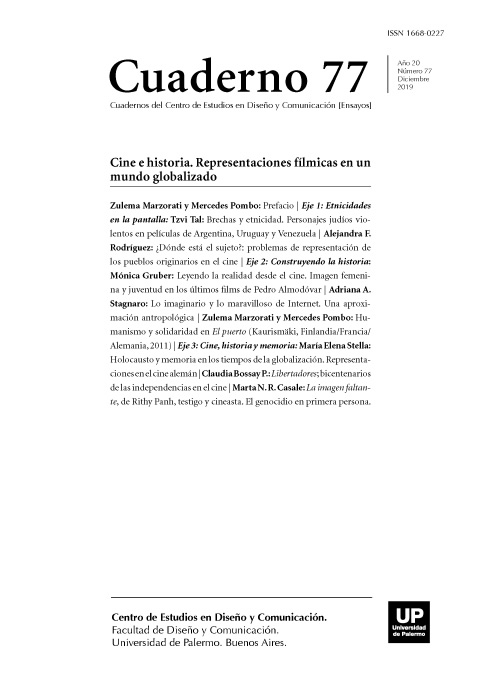Lo imaginario y lo maravilloso de Internet. Una aproximación antropológica
Abstract
One of the most remarkable features of the era of globalization is, without doubt, the central place that memory occupies in the culture and politics of Western societies. Indeed, since the last two decades of the 20th century, there has been an almost obsessive concern for the past and, particularly, for the memory of traumatic historical events. Such phenomenon can be attributed, among other explanations, to the fact that the global world, which emerged from the end of the Cold War, despite the optimistic first speculations, turned out to be a violent scenario, of genocides, ethnic, national and religious conflicts. In this way, the main protagonists of recent history were emigrants, refugees, genocide victims and perpetrators and, as Andreas Huyssen puts it, the Holocaust has become the universal interpretative matrix of the acts of mass violence (Huyssen, A., 2002, p. 13-22). On the other hand, and related to the above, there has been a renewed interest in memory and justice over the criminals of Nazism. In this process, the cinema has had a relevant role through a considerable number of fiction films and documentaries that took up, with assiduity the theme, from the 80s, a profusion that contrasts with the previous stage. According to our hypothesis, just as the Holocaust became a universal tropes in explaining the great massacres and genocides of the current era, the culture of globalization returned to the Shoah, formulating a strong criticism of the entire generation that followed the event –main powers, political leaders, institutions– for sacrificing the past in terms of the present and the future and having enshrined oblivion, silence and impunity, for several decades. Within this context of revision of the National Socialist past and the concern for justice in relation to the perpetrators, of which the cinema plays a significant role, the present work will deal with the film Labyrinth de Lies (Giulio Ricciarelli, 2014), of its links with the historical context of production and the new meanings it builds around those traumatic events that took place at the middle of the previous century. Our approach considers the cinema as a source of history, in the sense that it gives an account of the historical context in which it arises, its concerns, its discourses (Ferró, Marc, 1995) and, on the other hand, it aims at the analysis of its representations to stop at the new senses that attributes to that past (Rosenstone, R., 1997).
References
Feierstein, D. (2012). Memorias y representaciones. Sobre la elaboración del genocidio. Buenos Aires: Fondo de Cultura Económica.
__________. (2015). Juicios. Sobre la elaboración del genocidio. Buenos Aires: Fondo de Cultura Económica.
Ferró, M. (1995). Historia contemporánea y cine. Barcelona: Ariel.
Huyssen, A. (2002). En busca del futuro perdido. Cultura y memoria en tipos de globalización. México: Fondo de Cultura Económica.
Müller, I. (2006). Los juristas del horror. Traducido por Carlos Armando Figueredo. Caracas, Venezuela: Editorial Actum.
Rosenstone, R. A. (1997). El pasado en imágenes. El desafío del cine a nuestra ideas de la historia. Barcelona: Ariel.
Traverso, E. (2011). El pasado, instrucciones de uso. Buenos Aires: Prometeo.
Vezzetti, H. (2003). Pasado y Presente. Guerra, dictadura y sociedad en la Argentina. Buenos Aires: Siglo XXI.
Los autores/as que publiquen en esta revista ceden los derechos de autor y de publicación a "Cuadernos del Centro de Estudios de Diseño y Comunicación", Aceptando el registro de su trabajo bajo una licencia de atribución de Creative Commons, que permite a terceros utilizar lo publicado siempre que de el crédito pertinente a los autores y a esta revista.


